FPGA Design: A Comprehensive Guide to Mastering Field-Programmable Gate Arrays
FPGAs are reprogrammable integrated circuits that enable customizable digital logic designs, providing designers and engineers with a rapid prototyping platform for building complex, efficient, and innovative digital electronic solutions.
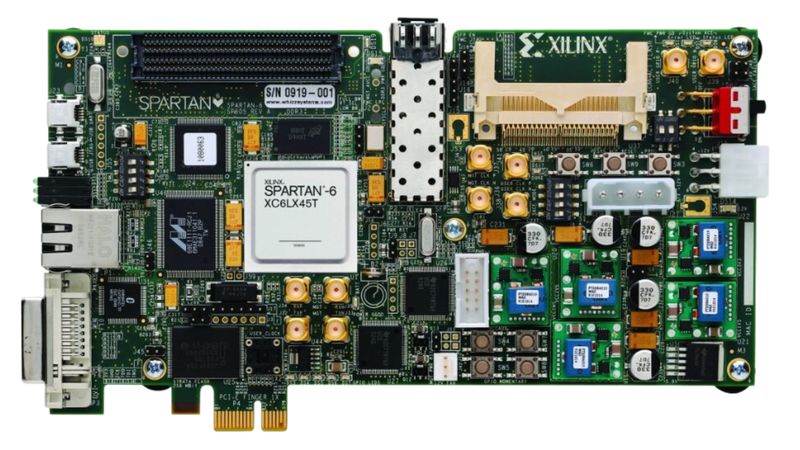
Source: AMD Xilinx
Introduction
Field-Programmable Gate Arrays (FPGAs) have emerged as a versatile and powerful technology, enabling engineers to create custom, reconfigurable digital circuits. With their unique combination of flexibility, parallelism, and rapid prototyping capabilities, FPGAs have found applications in diverse industries such as telecommunications, aerospace, automotive, and more.
This comprehensive guide aims to help you understand the fundamentals of FPGA designs, the design process, various applications, and best practices for creating efficient and high-quality designs. By the end of this article, you will have a strong foundation in FPGA system design, empowering you to harness the full potential of this remarkable technology in your projects.
Understanding FPGA Basics
In this section, we will delve into the basics of Field-Programmable Gate Arrays (FPGAs), exploring their primary components, advantages, and how they compare to other technologies like Application-Specific Integrated Circuits (ASICs) and microcontrollers.
What is an FPGA?
Field-Programmable Gate Arrays (FPGA) are semiconductor devices that can be programmed and reprogrammed after manufacturing to implement digital logic functions. FPGAs offer a unique approach to implementing digital circuits by providing programmable hardware blocks and interconnects that can be configured to perform a wide range of tasks.
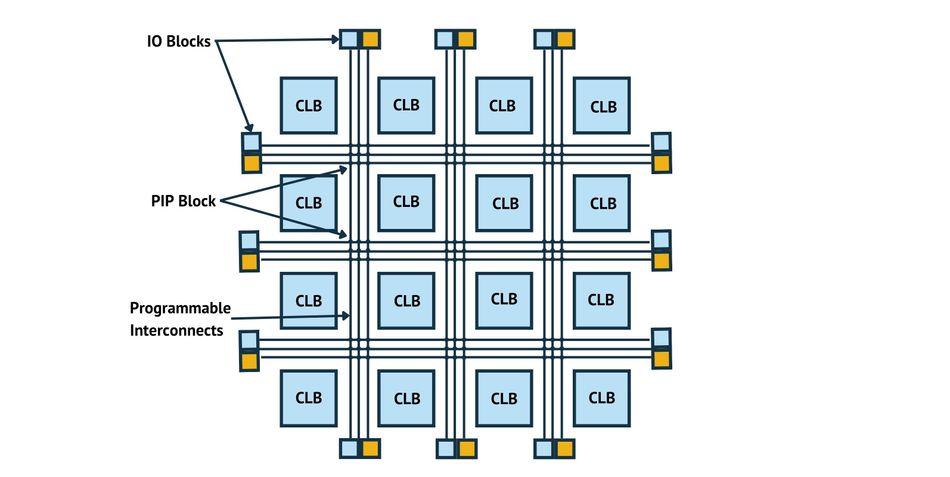
Components of an FPGA
An FPGA (Field-Programmable Gate Array) consists of several key components that work together to enable the implementation and configuration of custom digital circuits. The main components of an FPGA are:
Configurable Logic Blocks (CLBs): These are the basic building blocks of an FPGA, containing Look-Up Tables (LUTs), flip-flops, and sometimes dedicated arithmetic units. CLBs can be configured to perform various combinational and sequential logic functions.
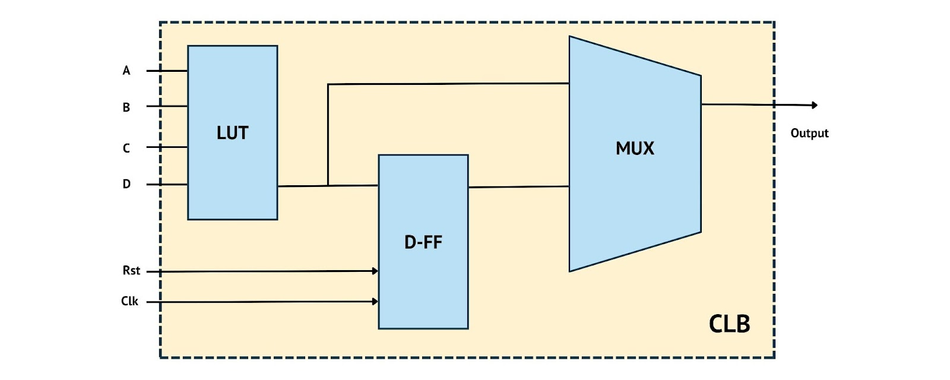
Programmable Interconnect Points (PIPs): These are the programmable switches and wiring resources that connect CLBs and other components within the FPGA. PIPs allow for flexible routing and interconnection of signals between different elements on the chip. Deep down, transistors are the basic building blocks of FPGAs, forming both CLBs and PIPs.
Input/Output Blocks (IOBs): These are the interface points between the FPGA and external devices or other components on the board. IOBs are configurable to support various signaling standards and protocols, enabling the FPGA to communicate with a wide range of peripherals.
Block RAM (BRAM): This is the on-chip memory available on an FPGA, used for storing data and implementing memory functions. BRAMs are faster than off-chip memory and can be accessed with lower latency.
Digital Signal Processing (DSP) Blocks: These are specialized hardware blocks dedicated to performing arithmetic operations, such as multiplication and accumulation, at high speeds. DSP blocks are commonly used in signal processing and filtering applications.
Clock management resources: These include Phase-Locked Loops (PLLs) and Digital Clock Managers (DCMs) used to generate, distribute, and manage clock signals within the FPGA. These resources help maintain precise timing and synchronization across the device.
Configuration memory: This is the flash memory that stores the configuration bitstream, which programs the FPGA to implement the desired digital circuit. The bitstream is loaded into the FPGA at startup or when reprogramming is required.
Traditionally, code is written and compiled into instructions that run on a processor. However, with FPGAs, code can be written differently using a hardware description language (HDL). This code is then synthesized into physical hardware blocks, which can be configured to perform the desired logic functions directly on the FPGA. The hardware blocks in FPGAs consist of registers and various types of logic gates, such as AND, OR, NOR, NOT, XOR, and XNOR gates. These gates can be combined to create complex digital circuits. The key to FPGAs' flexibility lies in the use of look-up tables (LUTs) to implement logic gates. The interconnections between these logic blocks are also programmable, allowing for flexible wiring and routing of signals. By making these LUTs programmable and connecting them using a reconfigurable switching fabric, FPGAs can be customized to perform a wide range of tasks. By providing a single device that can run whatever code the user desires, FPGAs have become popular in various applications, from prototyping to high-performance computing.
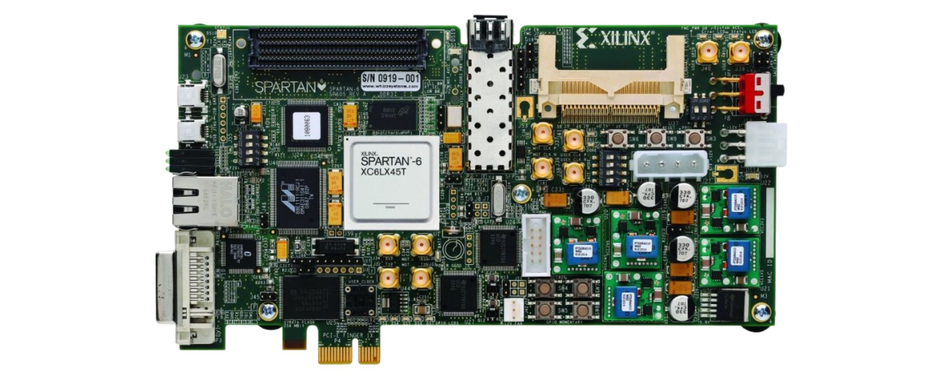
HDL Languages: VHDL and Verilog
Hardware Description Languages (HDLs) are used to describe digital circuits at a high level of abstraction. The two primary HDLs used in FPGA design are VHDL and Verilog.
VHDL: VHDL (VHSIC Hardware Description Language) is a strongly-typed, verbose language that provides a high level of abstraction, making it easier to write complex designs. It is widely used in Europe and in industries such as aerospace and defense.
Verilog: Verilog is a more concise, C-like language that is popular in the United States and in the commercial sector. It has a lower level of abstraction compared to VHDL, which can make it more challenging for complex designs but also allows for greater control over the design.
Both languages have their strengths and weaknesses, and the choice between VHDL and Verilog often comes down to personal preference or industry standards.
To understand the differences better, let’s take a look at a Python code to add two numbers:
In Python, the code is written in a high-level language that abstracts the details of the underlying hardware. The function add_numbers takes two input arguments, a and b, and returns their sum. The code is executed by the processor, which handles the addition operation.
Now, let's look at a simple Verilog code to add two numbers:
In this Verilog code, we define a module called Adder with two 4-bit input wires, A and B, and one 4-bit output wire, Sum. The code describes the behavior of a digital circuit that adds two numbers using the assign statement, which is performed directly in hardware, utilizing the FPGA's programmable logic resources. The result is a custom circuit designed to add two 4-bit numbers.
The main difference between the two approaches is that the Python code is executed sequentially by a processor, whereas the Verilog code describes a digital circuit that is implemented directly in hardware using an FPGA. This means that the FPGA-based adder can perform the addition operation in parallel and typically at a faster speed compared to a processor executing Python code. However, Python provides more flexibility and ease of use, while Verilog requires a deeper understanding of digital circuit design and FPGA resources.
Advantages of FPGA
FPGAs offer several advantages over other technologies, including:
Flexibility: FPGAs can be reprogrammed to implement different functions, making them suitable for a wide range of applications.
Rapid prototyping: FPGAs allow designers to quickly test and iterate on their designs, reducing time-to-market.
Parallelism: FPGAs can perform multiple tasks simultaneously, which can lead to improved performance in certain applications.
Customization: FPGAs enable the creation of application-specific hardware tailored to meet specific requirements, often leading to optimized performance and reduced power consumption.
Reconfigurability: FPGAs can be reconfigured in the field, allowing for updates, bug fixes, or feature additions without requiring the replacement of the entire hardware.
Lower NRE costs: FPGA development does not require the high non-recurring engineering (NRE) costs associated with custom ASIC designs, making them more affordable for small-scale productions or proof-of-concept projects.
Scalability: FPGA designs can be easily scaled up or down depending on the requirements, enabling efficient resource utilization and cost-effective solutions.
Security: FPGAs can provide increased security through hardware-based encryption and secure boot features, which are more difficult to tamper with compared to software-based implementations.
Analog and digital interfacing: FPGAs can interface with a wide variety of analog and digital peripherals, simplifying system integration and allowing seamless communication between different components.
Longevity: FPGA-based designs often have longer lifespans than ASICs, as they can be updated and reprogrammed to accommodate evolving standards and technologies.
Design reuse: IP cores and previously developed FPGA designs can be easily reused and integrated into new projects, reducing development time and effort.
Disadvantages of FPGA
FPGAs have a few disadvantages compared to other technologies, such as ASICs and microcontrollers. Some of the disadvantages include:
Cost: FPGAs can be more expensive than microcontrollers or ASICs, especially for high-volume production. The per-unit cost of an FPGA is generally higher than that of an ASIC or microcontroller for large quantities.
Power consumption: FPGAs typically consume more power than ASICs and microcontrollers, which can be a concern in power-sensitive applications.
Design complexity: The design process for FPGAs can be more complex than for microcontrollers, requiring specialized knowledge of hardware design, HDL, synthesis, and place-and-route tools.
Performance limitations: Although FPGAs offer parallelism and can deliver high performance for some tasks, they may not be as fast as ASICs for certain applications, as ASICs are custom-designed for a specific purpose and can be highly optimized for performance.
Size: FPGAs can be larger than equivalent ASICs or microcontrollers, as they include additional resources for programmability and reconfiguration.
Configuration time: FPGAs require configuration at startup, which can lead to a longer startup time compared to ASICs and microcontrollers.
FPGA vs. ASIC vs. PLD vs. Microcontroller
FPGAs, Application-Specific Integrated Circuits (ASICs), Programmable Logic Devices (PLDs), and microcontrollers are all technologies used to implement digital logic functions, but they differ in various aspects. Let's compare and contrast these technologies:
FPGAs: As mentioned earlier, FPGAs are reprogrammable, making them suitable for a wide range of applications. They offer high performance and parallelism but can be more expensive and power-hungry compared to ASICs, PLDs, and microcontrollers.
ASICs: ASICs are custom-made for a specific application, resulting in optimized performance and power consumption. However, they have high upfront costs, long development times, and lack the flexibility of FPGAs and PLDs, making them suitable for high-volume production runs.
PLDs: PLDs, including Complex Programmable Logic Devices (CPLDs) and Simple Programmable Logic Devices (SPLDs), are reconfigurable hardware similar to FPGAs but with less complexity and fewer resources. They are well-suited for simpler digital designs and can offer lower cost and power consumption than FPGAs, but may lack the performance and flexibility of FPGAs for more complex applications.
Microcontrollers: Microcontrollers are general-purpose computing devices with integrated memory, processing, and input/output capabilities. They are typically slower and less parallel than FPGAs and PLDs but are cheaper, consume less power, and are easier to develop with.
In summary, FPGAs offer flexibility and parallelism, ASICs provide optimized performance and power consumption, PLDs deliver simplicity and cost-effectiveness, and microcontrollers are cost-effective and easy to develop with. The choice of technology depends on the specific requirements of the application and the desired trade-offs between performance, power consumption, development time, and cost.
Suggested Reading: ASIC vs FPGA in chip design
FPGA Design Process and Methodology
In this section, we explore the FPGA design process, including design flow, hardware description languages, register-transfer level (RTL) design, synthesis, implementation, and testing and debugging.
Design Flow Overview
The FPGA design flow consists of several steps that guide designers from concept to a fully functional FPGA implementation. These steps include:
Design entry: Designers create a high-level representation of the desired digital circuit using an HDL like VHDL or Verilog.
RTL design and simulation: The HDL code is translated into an RTL representation, which is then simulated to verify functionality and performance.
Synthesis: The RTL design is converted into a gate-level netlist, a representation of the digital circuit using gates and flip-flops.
Implementation: The gate-level netlist is mapped to the FPGA's resources, including CLBs, DSP slices, and programmable interconnects. This step includes place-and-route and bitstream generation.
Testing and debugging: FPGA devices are tested and debugged with simulation tools, testbench, or target hardware to ensure correct functionality and performance.
Throughout the design flow, various tools and software are used to facilitate the design, simulation, synthesis, and implementation of FPGA designs.
RTL Design and Simulation
RTL design is an intermediate representation of a digital circuit that focuses on the flow of data between registers and the operations performed on that data. RTL simulation is used to verify the functionality and performance of the design before moving on to the synthesis and implementation stages.
Common RTL simulation tools include ModelSim, XSIM, and VCS. These tools allow designers to perform functional and timing simulations, which help identify and fix design errors and performance bottlenecks early in the design process.
Synthesis and Implementation
During the synthesis phase, the RTL design is converted into a gate-level netlist, which represents the digital circuit using gates and flip-flops. This process involves optimizing the design for area, speed, and power consumption. Common synthesis tools include Xilinx Vivado, Intel Quartus, and Synopsys Design Compiler.
The implementation phase involves mapping the gate-level netlist to the FPGA's resources, such as CLBs, DSP slices, and programmable interconnects. This step includes place-and-route, which determines the physical locations of the design elements on the FPGA, and bitstream generation, which creates the binary file that configures the FPGA. Implementation tools include Xilinx Vivado and Intel Quartus. EDA (Electronic Design Automation) tools play a critical role in the FPGA design flow, assisting designers in all tasks, including synthesis, placement, routing, and verification.
Testing and Debugging FPGA Designs
Testing and debugging are crucial steps in the FPGA design process, ensuring that the design functions correctly and meets performance requirements. Common testing methods include:
Simulation: Using simulation tools to test the design in a virtual environment, allowing for faster and more controlled testing.
In-circuit testing: Testing the FPGA design on the testbench or target hardware, often using a logic analyzer or an oscilloscope to monitor signals and identify issues.
Debugging FPGA designs involves identifying and fixing issues related to functionality, performance, and resource usage. Best practices for debugging include:
Using descriptive signal and variable names to improve code readability.
Employing a modular design approach, breaking the design into smaller, more manageable components.
Leveraging simulation tools and in-circuit testing to identify and isolate issues.
By following the FPGA design flow and employing best practices for testing and debugging, designers can create high-quality FPGA designs that meet the requirements of their specific applications.
FPGA Design Examples and Applications
In this section, we will explore various examples and applications of FPGA designs.
Digital Signal Processing (DSP) with FPGAs
DSP is the manipulation and analysis of digital signals, such as audio, video, or sensor data. FPGAs are well-suited for DSP tasks due to their parallelism and flexibility. Some examples of FPGA-based DSP applications include:
Audio processing: FPGAs can be used for audio effects, equalization, noise reduction, and compression.
Image processing: FPGAs can perform real-time image processing tasks like edge detection, filtering, and object recognition.
Software-defined radio (SDR): FPGAs can be used to implement various radio communication protocols, enabling highly customizable and adaptable radio systems.
FPGA-based Artificial Intelligence (AI) Machine Learning (ML)
FPGAs play a significant role in AI and ML applications, offering advantages such as low latency, high throughput, and energy efficiency. Some examples of FPGA-based machine learning and AI projects include:
Deep learning accelerators: FPGAs can be used to accelerate the training and inference of deep neural networks, improving performance and reducing power consumption compared to traditional CPU and GPU-based solutions.
Edge AI: FPGAs enable AI processing at the edge, reducing the need for data transmission to the cloud and improving privacy and security.
Custom AI hardware: FPGAs allow for the implementation of custom AI algorithms tailored to specific applications, optimizing performance and power efficiency.
Further reading: TPU vs GPU in AI: A Comprehensive Guide to Their Roles and Impact on Artificial Intelligence
FPGAs in Networking and Communication
FPGAs are widely used in networking and communication systems, offering high performance, flexibility, and adaptability. Some examples of FPGA-based networking and communication projects include:
Network switches and routers: FPGAs can be used to implement high-performance, low-latency ethernet switches and routers, enabling faster and more efficient data transmission.
Optical communication: FPGAs can be used in optical communication systems, such as dense wavelength division multiplexing (DWDM), to implement high-speed data transmission and signal processing.
Wireless communication: FPGAs can be used to implement various wireless communication protocols, such as 5G, Wi-Fi, and Bluetooth, enabling customizable and adaptable communication systems.
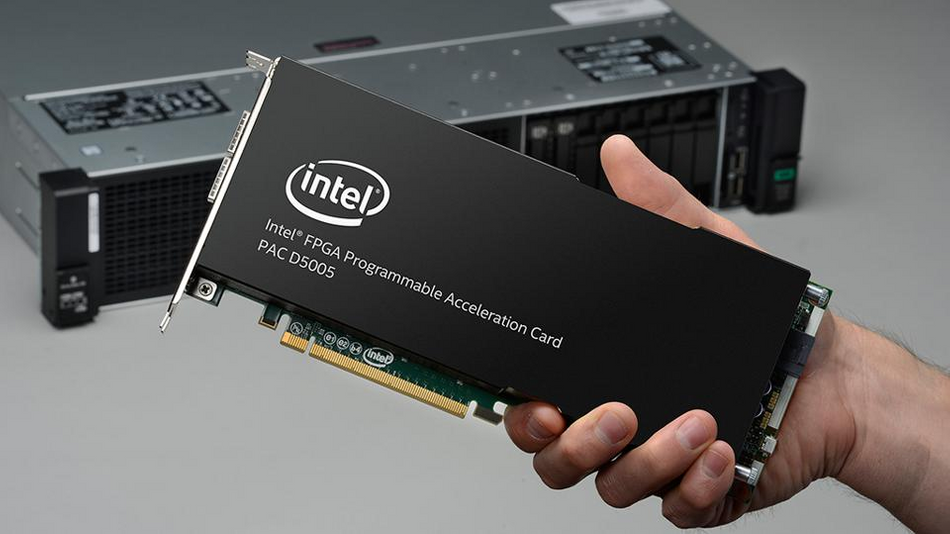
In summary, FPGAs are versatile and powerful devices that can be used in a wide range of applications, from digital signal processing to machine learning and networking, where the capabilities of a microprocessor might be more than what is required. By leveraging the unique capabilities of FPGAs, designers can create innovative and high-performance solutions for various industries and use cases.
Best Practices for FPGA Design
In this section, we will discuss general best practices for FPGA design, focusing on code readability, modularity, and techniques for optimizing designs for performance, power, and resource usage.
Code Readability and Modularity
Maintaining code readability and modularity is crucial for efficient FPGA design. By following these practices, you can improve the maintainability and scalability of your designs:
Descriptive naming: Use meaningful names for signals, variables, and modules to make your code more understandable.
Comments: Include comments to explain the purpose and functionality of your code, especially for complex or non-obvious operations.
Modularity: Break your design into smaller, more manageable modules or components. This approach makes it easier to debug, maintain, and reuse code.
Optimizing FPGA Designs for Performance, Power, and Resource Usage
Optimizing your FPGA design can help you achieve the desired balance between performance, power consumption, and resource usage. Some optimization techniques include:
Pipelining: Break complex operations into smaller stages and process them in parallel to increase throughput and reduce latency.
Resource sharing: Reuse hardware resources, such as multipliers, converters or memory blocks, for multiple operations to save area and power.
Clock gating: Disable the clock domain signal to unused or idle portions of your design to reduce dynamic power consumption.
In addition to these techniques, be sure to leverage the optimization features provided by synthesis and implementation tools, such as Xilinx Vivado and Intel Quartus. These tools can help you achieve the best possible results for your specific design requirements and constraints.
By following best practices for FPGA design and employing optimization techniques, you can create high-quality, efficient designs that meet the needs of your specific applications.
Suggested reading: The Ultimate Guide to ASIC Design: From Concept to Production
Frequently Asked Questions (FAQs)
- What are the main advantages of using FPGAs?
FPGAs offer flexibility, reprogrammability, parallelism, and rapid prototyping capabilities, making them suitable for a wide range of applications. - How do I choose the right FPGA for my project?
Consider factors such as the FPGA family, FPGA vendor, resource requirements, performance needs, and cost when selecting an FPGA for your project. - Can I use FPGAs for machine learning and AI applications?
Yes, FPGAs can be used for machine learning and AI applications, offering low latency, high throughput, and energy efficiency. - What are the differences between VHDL and Verilog?
VHDL is a strongly-typed, verbose language with a high level of abstraction, while Verilog is a more concise, C-like language with a lower level of abstraction. The choice between VHDL and Verilog often comes down to personal preference or industry standards. - What tools and software do I need to get started with FPGA design?
To get started with FPGA design, you will need an HDL editor, simulation tools (e.g., ModelSim, XSIM), synthesis tools (e.g., Xilinx Vivado, Intel Quartus), and implementation tools (e.g., Xilinx Vivado, Intel Quartus).
Conclusion
In this comprehensive guide, we have explored the fundamentals of FPGA designs, the design process, various applications, and best practices for creating efficient and high-quality designs. By understanding the working principles of FPGAs and leveraging the unique capabilities they offer, designers can create innovative solutions for a wide range of industries and use cases.
As you embark on your FPGA design journey, remember to follow the best practices discussed in this article, choose the right FPGA for your project, and always strive for continuous improvement in your design skills.
References
[1] FPGAs could replace GPUs in many deep learning applications https://bdtechtalks.com/2020/11/09/fpga-vs-gpu-deep-learning/
[2] Spartan and Spartan-XL FPGA, Families Data Sheet, AMD Xilinx, [Online], Available from: https://docs.xilinx.com/v/u/en-US/ds060
Table of Contents
IntroductionUnderstanding FPGA BasicsWhat is an FPGA?Components of an FPGAAdvantages of FPGADisadvantages of FPGAFPGA vs. ASIC vs. PLD vs. MicrocontrollerFPGA Design Process and MethodologyDesign Flow OverviewRTL Design and SimulationSynthesis and ImplementationTesting and Debugging FPGA DesignsFPGA Design Examples and ApplicationsDigital Signal Processing (DSP) with FPGAsFPGA-based Artificial Intelligence (AI) Machine Learning (ML)FPGAs in Networking and CommunicationBest Practices for FPGA DesignCode Readability and ModularityOptimizing FPGA Designs for Performance, Power, and Resource UsageFrequently Asked Questions (FAQs)ConclusionReferences

